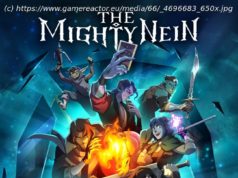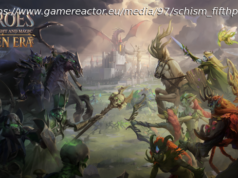Learn how to create your Perfect SaaS tech stack with the best programming language and build a multi-tenant architecture on AWS for your SaaS web app.
Join the DZone community and get the full member experience. Entrepreneurs, CEOs, CTOs, and IT leaders are generally tasked with choosing the ideal SaaS tech stack. Ultimately, this will be a deal-breaker in the success of your application. You can have a fantastic idea, marketing, and sales team. However, if your SaaS tech stack doesn’t scale, evolve, and continuously transform, you might be ending refactoring your entire SaaS web application every other year. This approach usually results in a waste of time, resources, and money. A quick look at SaaS communities and questions usually arise about what would constitute the perfect SaaS technology stack. The right answer to this question would be one that includes the combination of language and tools that get the job done. This post explores some of the most common Saas tech stacks that are essential to incorporate in your SaaS company. It also shows you why we choose python over other programming languages. We strongly recommend considering alternative options such as Java or Javascript (Node.js). There are different languages and tools that will make your developers’ lives easier and save web development costs. The following addresses some business capabilities that are essential for your SaaS tech stack and SaaS platform. A tech stack is the combination of the programming languages, development tools, libraries, frameworks, and software used to develop a web or mobile application. It is an essential element of the development process and one of the first steps to create your app. The tech stack is divided into two different sides including, the front end and the back end. The front end or the client-side of the application refers to everything the user can see on the screen and interact with, including the app’s format and design. The frontend technologies include HTML, CSS, JavaScript, UI frameworks, and libraries. On the other hand, the back end or the server-side refers to the invisible part for the users that require frameworks, programming languages, servers, and operating systems. We’ve understood what is precisely a tech stack, but why is it a significant consideration for building an app? Well, its importance lies in the fact that your tech stack will determine your application’s scalability, functionality, and viability. Hence the relevance of making the right decision about the best tech stack based on your company needs. Like I mentioned before, it is paramount to choose the right tech stack before starting your project because once you start using it, it will be challenging to make changes and may require extra amounts of money and time. The criteria for selecting the best SaaS tech stack is usually based on: 1. The predominant current developers’ language at your company. 2. The community size of software language and platforms. 3. Lower learning curve. For example, Python is easier to learn than other programming languages, from simple syntax, versatility, and very intuitive reading python code. 4. Current technology adoption by SaaS companies. For instance, the SaaS community widely uses AWS. 5. Ease of hiring developers to match your SaaS tech stack (Critical). 6. Potential future and long-term support. In addition, your SaaS tech stack approach must allow you to remain agile, simplify development maintenance, and optimize costs. Python is the world’s fastest-growing language for software engineers, mathematicians, network engineers, and even kids. People from different disciplines use python for a variety of different tasks, including data analysis, artificial intelligence, machine learning, and web and mobile applications – even Desktop apps! Python is leveraged by multiple known companies, including Youtube, Google, Quora, bitbucket, Instagram, and much more. It seems to be the de-facto solution for your SaaS platform if your business requires a lot of back-end logic, including high-computing algorithms, statistics, data science, high performant API REST apps, and web scraping. ✔ Strong ecosystem, including libraries, and framework. ✔ You can create fewer lines of code with python VS any other language. ✔ The environment can be very stable VS other languages like javascript, PHP, and Ruby. ✔ The ability to modify the code while it is running is a significant advantage. ✔ The Machine Learning and Artificial Intelligence (ML / AI) integration is a big plus with Python. The most disruptive ML/AI frameworks are based on python and this makes developers comfortable working with this language. Alternatives: Java or Node.js. Read the Basics of Multi-tenant Node.js and PostgreSQ L to learn more about it! Don’t forget about your Python Framework. Nowadays, there are two top-notch python frameworks to develop your next-gen SaaS solution; Django or Flask. They are both powerful, rich, and widely adopted. Let’s explore both options. Django contains an all-inclusive python framework. You get the ORM, directory structure, database interfaces, and admin panel all out of the box. It is easier to learn and has a wider community compared to Flask. It’s also very agile to troubleshoot through the Django shell, can be integrated with multiple SQL tools, and offers an admin interface. If you are a new python developer, go for Flask to understand the foundational concepts and then decide to go to Django or stick with Flask. But if you need to develop fast, have no time for a lot of research, and have the ease of finding local developers, go with Django. The bottom line is that Django is widely used as more developers are familiar with it. Django is also relatively quicker for building MVPs. According to the Python developers learning the language from scratch, Flask is a better option. Still, after your development gets extended and customized, Flask can become more complex to maintain. Flask is the typical choice by developers (pythonists) who love learning the backbone of every back-end logic. Developers prefer to understand every piece of the backend, but this ends with lower development in the first instance. On the other hand, with Django, you create production systems without understanding the whole concept of python and its framework. I have found a common denominator across startups, fintech, and SaaS companies in the last two years, and it’s React. We get product development requests with specific technology requirements from python, go, java, and Node.js in the back-end, but the front-end concern is usually React. Our experience based on our projects‘ range speaks volumes. Six out of ten of them include React, two are angular, and the rest are either Vue.js or Jquery. Based on current trends in 2020, perhaps in 1-2 years, Vue.js will take a larger piece of the cake. However, a quick look at Google search trends and Stack Overflow questions seem similar that React beats every front-end language by 2-3X. Similarly, React has become a buzzword where web developers that fortune 500 companies including Netflix, Airbnb, and Dropbox are looking to move towards. On the other hand, sadly, Angular is going down. In this graph, you can see the Reactjs trend, look at how it is climbing, and taking the lead regarding the Stack Overflow questions Google Trends comparing Angular vs React vs Vue In this case, Reactjs has been for a while the number one in Google searches; comparing to Angular or Vue, it’s almost 3X times! Now that you understand that React is a top-trend and widely used front-end programming language. Let’s learn a little bit about why it is your best option. Facebook developed this front-end Javascript framework, a library used for UI/UX and to create beautiful interfaces. Its main feature is that it is divided into different modules and components, allowing it to make fast and efficient front-end applications with very little effort. If you know Javascript, your learning curve on React will probably be more comfortable and friendly. ✔ Client-side development One key differentiator for choosing your front-end programming language is developing and building features on the client-side (visitor’s browser). This was revolutionary and came by a disruptive ecosystem from Angular. Have you noticed that you need more CPU and memory in your browser recently or in the past? Have you realized that Chrome or Firefox consumes a lot of RAM or computer resources? Well, here’s your answer, React is processed mainly on the client-side, leaving all computing to the visitor (end-user). ✔ React Virtual DOM Another vital component is the use of its virtual DOM, which facilitates the update of “components” and views without the need to update the whole “view” when a visitor is interacting with the application.






